The ever-pervasive dandelion.
It’s one of the first plants to sprout in spring, when the ground is barely free of frost, and remains steadfast through the season with vibrant pops of yellow and downy balls of seeds so nostalgic of childhood wonderment.
The benefits of dandelion are many yet somehow, somewhere along the way, this humble plant that has fed and healed humanity for thousands of years became a blight on our landscape.
Dismissed as a weed, eradicated at all costs, cursed and scorned for its stubbornly long taproots that often refuse to give from the earth, it’s earned a reputation for invasiveness and uselessness.
But I’m here to make a case for the common dandelion (Taraxacum officinale), which you might be eyeing right about now, weeder in hand, as a galaxy of yellow blooms starts spreading across your Kentucky bluegrass.
While you might consider it the bane of an otherwise perfectly manicured lawn, here are nine good reasons why the lowly dandelion is the unsung hero of your yard.
1. Dandelions are not as invasive as commonly thought.
Though they’re non-native to North America (originally hailing from Europe), dandelions are not considered invasive by federal agencies.
An annoyance, perhaps, but far from being aggressively spreading plants that alter natural habitats, the hallmark of a truly invasive species.
Dandelions have naturalized throughout all 50 states (as well as most of Canada and even Mexico) and are believed to have been brought over by the Pilgrims, who planted the herb as a medicinal crop.

2. Dandelions add color to the drab landscape of early spring.
As soon as frost has passed, dandelions begin to dot the southern slopes, brightening the brown and gray landscape with pops of chartreuse.
In a matter of weeks, those same dandelions start to unfurl into a carpet of gold against all the new green—a brilliant bloom of color and texture, all without you sowing a seed or lifting a trowel.
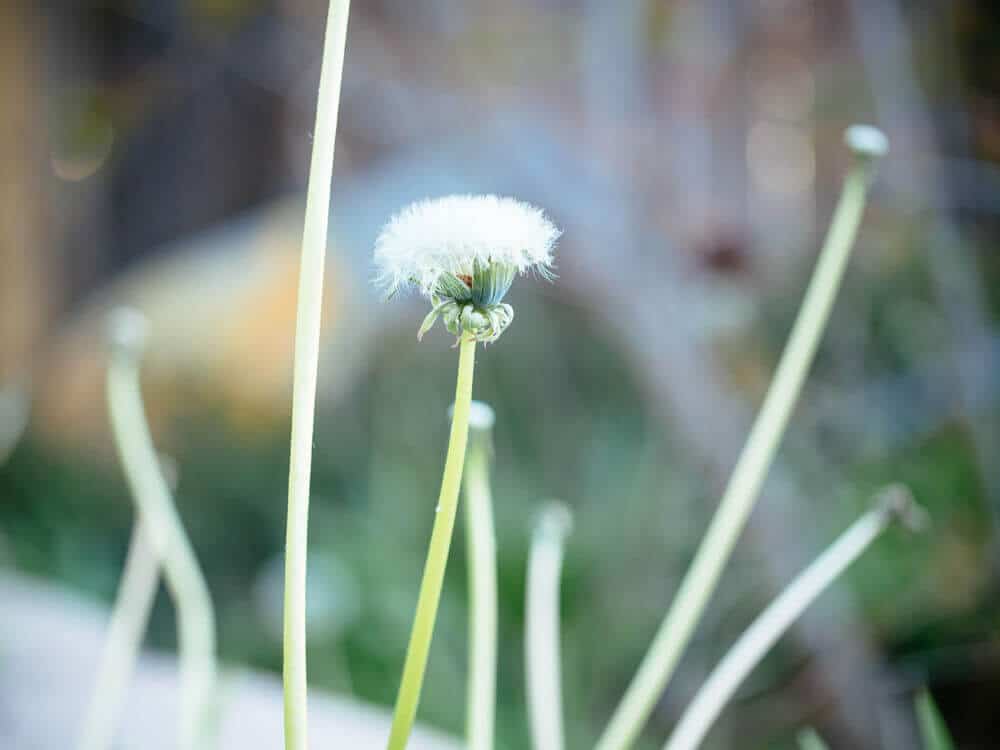
3. Dandelions are an important source of food for wildlife.
When bees, butterflies, and other pollinators emerge in early spring, a tricky time with few other flowers blooming, they depend on dandelions as an early source of pollen and nectar.
Read more: How to create a beautiful butterfly garden
The flowers provide nectar for nearly 100 species of insects, while the seeds and leaves feed over 30 species of birds, chipmunks, and other wildlife.
Got backyard chickens? Let them go to town on a patch of dandelions after a long and dreary winter.
The greens provide plenty of nutrients for rich golden yolks, and happy chickens scratching (and pooping) in the dirt means healthy aerated soil.
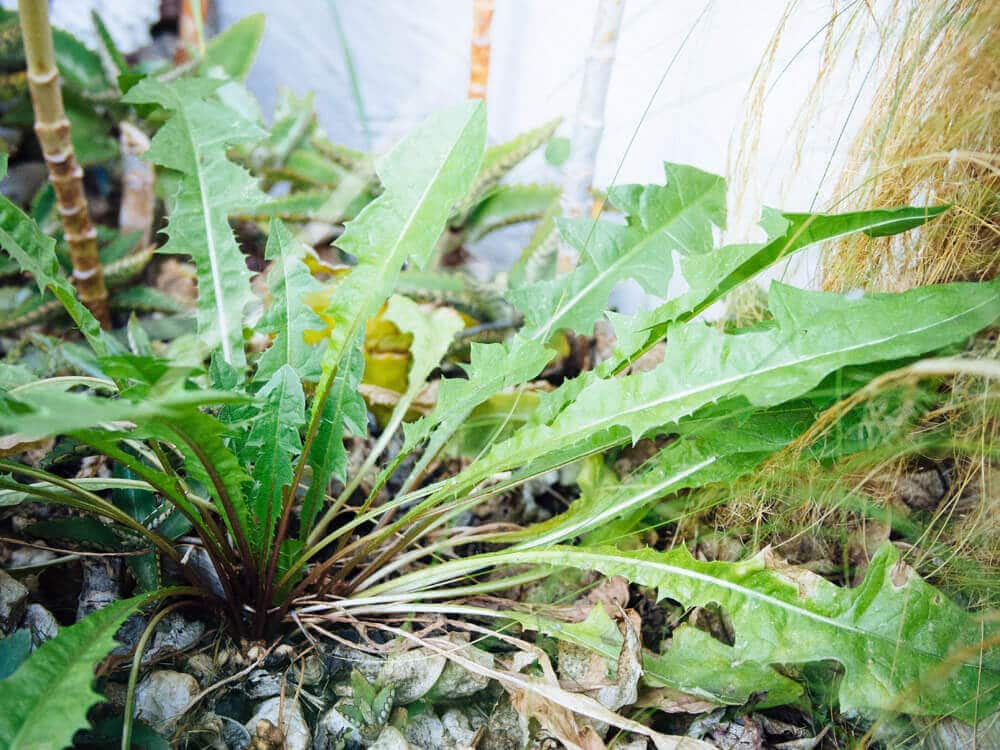
4. Dandelions encourage biodiversity.
Their presence alone attracts and supports several key species in the local ecosystem, including native bees, butterflies, moths, and birds, which in turn pollinate fruits, vegetables, herbs, and other flowers that feed even more species.
Hummingbirds use dandelion down to line their tiny nests, and beneficial insects and lizards seek shelter under the low-growing leaves (which often rest on the ground in a dense rosette).
Related: How to make your own hummingbird food
5. Dandelions protect the soil.
And they do so just by growing: the roots hold the soil together to help prevent wind and water erosion.
Since the plants grow so quickly, they spread widely to cover bare soil and act as a natural mulch or ground cover by providing shade and conserving moisture.
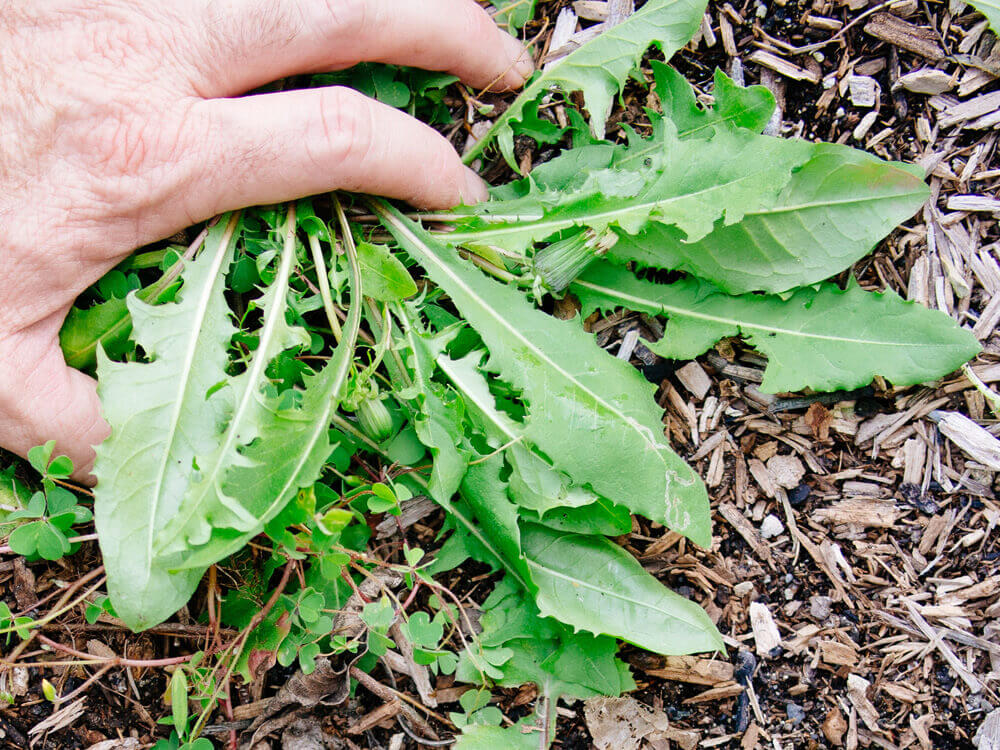
6. Dandelions aerate and condition distressed soil.
The long, strong taproots of dandelions push through into dry, cracked, compacted earth, helping to break it up, create channels for air and water to penetrate, and maintain a loose soil structure that allows earthworms to do their work.
The plants draw calcium, iron, and potassium from deep in the earth into their leaves. When they die and decompose, they leave behind mineral-rich organic matter that nourishes the soil.
Quick Tip
To maintain their spread, cut the plants back before the seeds disperse into the wind. Tuck them under the mulch for a tidier garden, or let the plants compost in situ. Leave the roots in the ground. As a perennial plant they will often regrow, or eventually decay and enrich the soil food web.
Dandelions also make great compost heap additions, but they can go to seed even after they’re picked.
If you don’t want dandelions throughout your yard, turn the compost regularly so the heat of the mound can kill the seeds.
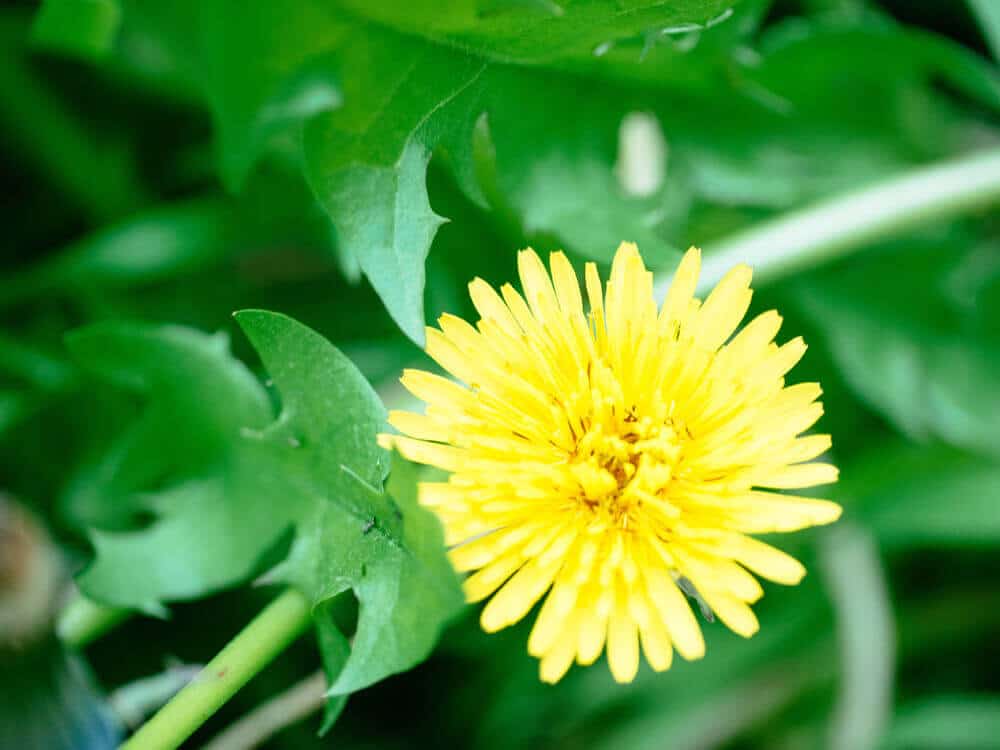
7. Dandelions are edible from root to flower.
Though we typically think of dandelions as flowers, the dandelion is a perennial herb (or a perennial vegetable, depending on how you like to use it) and is one of the oldest herbs used for food and healing—since before Roman times!
Every part of a dandelion is edible, from root to flower.
Read more: You grow these plants in your yard and probably didn’t know you can eat them
As a relative of chicory, dandelion root can be dried and roasted and used as a substitute for, or addition to, coffee. The root can also be peeled and cooked like a turnip.
Young dandelion leaves are among the most nutritious you’ll find of any leafy green, and can be used in a salad, on a pizza, or in a pesto. Mature leaves can be sauteed or added to soups and stews.
Ever tried dandelion chips? You can make them like kale chips!
(Here’s a fun fact: The name dandelion is a corrupted pronunciation of the French dent de lion, or “lion’s tooth,” referring to the jagged leaves that are characteristic of the plant.)
As for the flower, it can be tossed with a salad, steeped into tea, or turned into wine.
8. Dandelions have medicinal value.
For thousands of years, various parts of the dandelion plant have been used in medicine to naturally detoxify the body and support healthy liver function and kidney function.
The herb is well-documented as a diuretic, hence its other French name, pis en lit (which sounds much more romantic than its English translation, “piss the bed”).
Dandelions have been used holistically to stimulate the appetite, settle upset stomach, improve skin issues, and treat a host of other ailments including heartburn, mastitis, inflammation, constipation, and hormonal imbalance.
Preliminary animal studies also suggest that dandelions may help normalize blood sugar and lower cholesterol.
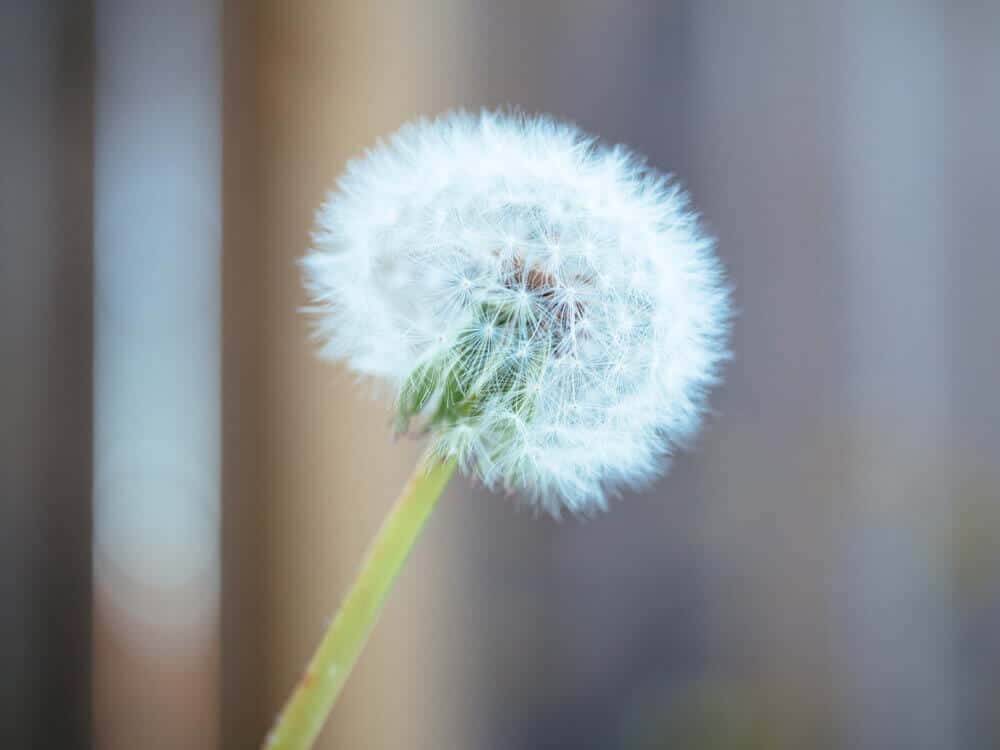
9. Anyone under the age of 10 loves a good dandelion patch.
I remember skipping down the sidewalk and picking every dandelion globe in my path, giving a mighty blow and watching with delight as the puffs fluttered through the air.
Little did I know at that young age that I was inadvertently distributing the seeds far and wide. To me, the puffs were akin to fairy dust, or a mini snowstorm in my arid hometown of Las Vegas.
And who doesn’t love the whimsy of a dandelion clock?
You know: the childhood game where the number of breaths needed to blow away all the seeds is the hour of day. It might be three o’clock or ten o’clock or twenty o’clock, but no matter—you can try and try again until you get it right.
I also remember lying on the grass on a lazy afternoon with my friends, making dandelion crowns for ourselves and our dolls.
Or dipping the flowers in paint and stamping them onto paper to make an abstract masterpiece for the fridge.
Or picking a handful of flowers to bring home and put into a glass of water—something I still do to this day, as a cheery little bouquet of blooms always makes me smile.
This post updated from an article that originally appeared on April 5, 2017.


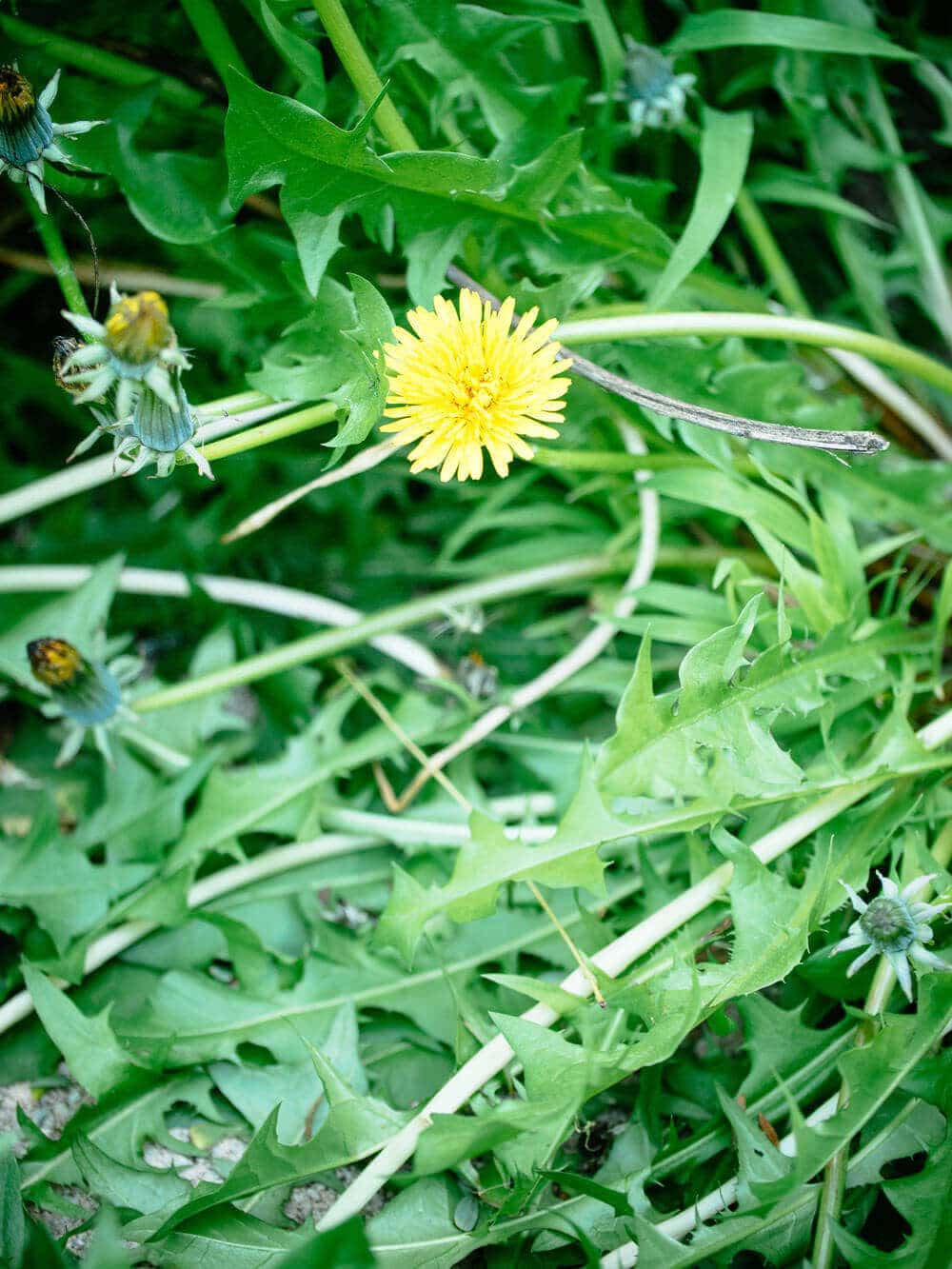













these greens are so good in a salad, use like spinach in an omelette. dandelions are a very beautiful flower and have been villainized by the chemical companies the poison that is sprayed on these valuable plans, poisons the earth and the pollinators we must educate ourselves. please do not send me 1 million emails. I will do my own research so if leaving my email address is to be sold to someone else please delete it.
Many federal agency described dandelions as invasive. Here is just one.
https://www.fs.fed.us/wildflowers/plant-of-the-week/taraxacum_ceratophorum.shtml
I did not see anything on that page that referred to dandelions as invasive? However, I did find this on the US Forest Service site which listed dandelions as a weed, but NOT an invasive species (there’s a difference): https://www.fs.usda.gov/detail/r8/forest-grasslandhealth/invasivespecies/?cid=stelprdb5326137
Dandelions are actually an important food source for wildlife in certain regions, and considered invasive in others—it just depends on the environment.
The article that Kristin sent is about a native dandelion it refers to the common dandelion as “the weedy non-native invasive dandelion”:
“Unlike its exotic weedy relative, the common dandelion (Taraxacum officinale), you might be surprised to know we do have a few native dandelions to North America.”
“While the weedy non-native invasive dandelion can dominate and replace huge areas of native vegetation, our alpine dandelion occurs as a yellow native beauty.”
I would love to have this article in printable form
Copy the text and paste it into a word document. Then print.
Yes, where I live in Canada, dandelions are a very aggressive weed! I understand they have very good value in many aspects and I do enjoy the greens myself … BUT, the last week or so, I have honestly spent a very exhausting 30 hours or so spading and hand digging them from my plantings! One must deeeply mulch every last square inch of soil, otherwise they will fill it with vast seedlings per sq ft like no other “wild flower” is capable of! At least with most all other weedy plants in this region, I can quickly take the Dutch hoe to the soil and have things cleaned up rather quickly, if one is not immediately upon the dandelions and they establish just a bit, then such a simple once over leaves behind the roots to reestablish the plant. They get into the crowns of perennials and in the middle of shrubs becoming intertwined and can not be dug out, but must be carefully painted with herbicide. Having a strawberry patch that isn’t smothered out by dandelions is almost impossible here! Previously, I had lived next to an open grass field with dandelions as solid sea of yellow. One year, the wind had blown a carpet of their seeds fluff half an inch deep into my vegetable and flower gardens with ensuing seedlings coming on as thick as hair on dogs back! I know for certain now I have gotten the dandelions under control in both my lawn and gardens, I will have vastly reduced my workload without having made a dent in the world’s dandelion population! Now, things would be different if some natural controls existed, but hardly anything here goes after the developing seed heads, a few get those worms in, but that hardly knocks them back the tiniest of fraction and the finches barely touch them as well!
Ha ha wait until you meet ground elder.
How about some less general/ more specific recipes for incorporating dandelions in our diets, wine cellars and first aide kits??
Good idea! I’ll put it into my pool of posts to research.
I LOVE your discussion of dandelions! I sometimes harvest a few for their tasty roots, but they’re always protected and encouraged to become the prettiest part of my back yard.
Oh, that sounds lovely!
I’m fascinated at what makes humans act in certain ways.
Like how & why did such a beneficial & easy to grow flower become to be viewed as a “weed”.
So many things humans do is so completely backwards.
We are mere slaves to trends & pop-culture.
It’s so weird, that such an abundant source of food is so often destroyed with poisons….yet so many people are going hungry.
Aside from consuming dandelion myself, I also feed them to my compost worms.
They absolutely love ’em….one of the first things they seek out to eat.
Great article.
Too bad not enough people posses such insight.
Read: The Secret Life of Plants.
I suppose weediness is subjective, depending on what you want in your garden or landscape. I agree it’s a shame that dandelions have gotten such a bad rap, but am happy to see it pop up in my local grocery store occasionally. Baby steps!
Perhaps you don’t understand the problem with invasive species? Few things will naturally control them so they take over niches in the environment which are linked to many other things. They are disrupters. The term weed generally refers to something that is uninvited, and doesn’t belong there and often spreads. Fits dandelions to a t whether you like them personally or not. ♀️ There’s no correlation between my childhood memories related to blowing dandelion seeds and understanding environmental impact.
Great article, although many public forest preserves and national/state parks do classify (common/eurasian) dandelions as threatening invasive species. I feel it’s a bit misleading to say that theres no federal agency/group that considers them truly invasive, when many parts of the National Park service and various state park services regularly recruit volunteers to dig them up along with other invasives. A few extra in someones yard won’t do much damage, but it’s not a full picture to say that they are mostly harmless.
I believe it depends on the parks themselves. From my reading, most will dig up dandelions in an effort to control/reduce their spread, but in general, dandelions are not considered invasive or threatening enough to outcompete native species for essential resources.
Excellent! Thank you for the wonderful information presented in such a lovely way.
You’re welcome! I’m happy you enjoyed this post.
Love the extensive article that defends the unsung hero! I honestly never thought of dandelions that way at all. I do let them grow in my garden, but only because I thought they were pretty. But now after reading about all the unbelievable benefits i can gain from them, I have another reason to grow these lovely things!
So glad to hear it! I think they’re pretty too, and often overlooked.
My husband told me he loves dandelions. I always thought of them as a weed until I visited Fussen, Germany a few years ago. The view on our hike up to Neuschwanstein castle completely changed my mind and I was finally able to appreciate them as a beautiful flower. Check out the pictures, I’m sure they’d change anyone’s mind
http://www.allmyfriendsareflowers.com/2012/05/he-told-me-he-loves-dandelions.html
How does one collect and prepare Dandelion greens for consumption, say, as a salad green?
As a salad green, dandelions are best harvested when the leaves are young and tender. You can pull the whole plant up or pick individual leaves. If you’re foraging for dandelions in the wild (and not from your own yard), make sure they’re away from the road, not sprayed, etc.
Excellent! Thank you.
Love dandelions and everything that you post! I love your blog so much and check everyday! Hoping we’ll get to meet the new chickens soon!?!?
Thank you so much for supporting the blog! New chicken introductions coming soon. 🙂
I have a giant botanical print of dandelion hanging in my dining room to remind myself of its redeeming qualities. If only creeping buttercup and couch grass had some, then I could say I’ve made peace with the weeds.
Dandelions are great, I look at them and think to myself:”tortoise food!” But exactly because the diuretic properties of the plant the tortoises should not be fed it too much. We also used to make crowns for ourselves, sort of wreath-like structures to put on head. I love dandelions.
In our yard, dandelions are chicken food! And we love it because they come back season after season, especially when our regular plantings might be a little thin.
I love dandelions too! I really like making the flowers into syrup to use with fizzy water, and making the leaves into pesto!
Love the article and pics but your cover picture is not dandelion and I was uncertain about the article from that. It looks like self- heal.
I can say for certain it’s not self-heal (Prunella) as I’ve never had that growing in my garden. But studying the leaves more closely now, I’m wondering if it’s sow thistle… hard to tell without a flower stem. So, I’ve changed the image to one I DO know is dandelion until I can positively ID that other one. 🙂 Thanks for catching that!
That ID business aside, I love dandelions for all your above mentioned reasons, too 🙂
I thought all dandelion leaves were smooth (their edges have the teeth, of course)?? Some of your featured photographs leaves that are hairy or prickly on their surfaces…I don’t think those are dandelions! Taraxacum off. has plenty of look alikes 😉 thankfully their look alikes aren’t toxic to eat.
You’re so right! Those hairy leaves are chicory, and I’ve replaced the images to avoid confusion. (But to comment on your comment, some dandelions do develop a little hair as they mature.)
Ah yes it was possibly sow thistle!? So funny, all these yellow compositaes 😛 look-alikes abound! I love that plants tell us what we should be eating in each season! Thanks for your post and response 🙂